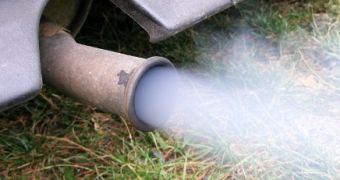Seeing how the number of cars roaming the national and international highways is only going up, researchers were quite surprised that the atmospheric concentrations of some air pollutants have in fact considerably diminished, in spite of our burning ever more gasoline and diesel fuel.
The simplest explanation NOAA's (the US National Oceanic and Atmospheric Administration) researchers could find for why this should be so is that cars have gotten more environmentally friendly over the past years.
However, this does not mean that the entire country is presently enjoying perfectly clean air. Quite the contrary: this study mainly focused on volatile organic compounds (VOCs, for short) found in the Los Angeles area.
For those unaware, said chemical compounds are known to cause lung-related health issues and damage crops.
Apparently, VOCs are released into the environment from the tailpipes of vehicles, so the fact that, between the years 2002 – 2010, their atmospheric concentrations dropped by as much as a half can indeed indicate major improvements as far as the ecological footprint of the cars we drive is concerned.
Specialist Carsten Warneke makes some very clear-cut statements about these findings and their implications.
“The reason is simple: cars are getting cleaner. Even on the most polluted day during a research mission in 2010, we measured half the VOCs we had seen just eight years earlier. The difference was amazing,” the scientist pointed out.
However, the researchers wish to draw attention to the fact that, although VOCs concentrations in the Los Angeles Basin have in fact improved over the years, air quality in the region has still to meet the standards established by US Environmental Protection Agency.
The good news is that by continuing to improve on our use of fuels and engine efficiency, it is quite likely that current levels of air pollution will continue to drop.
“This is essentially the kind of change we would expect, and it is very good to find that it is actually taking place,” argues environmental scientist Carsten Warneke.

 14 DAY TRIAL //
14 DAY TRIAL //